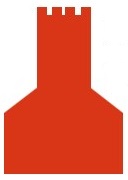squadrons based at raf swannington

Photo of some of the RAF personnel on the steps of Haveringland Hall; Credit Janine Harrington
The 100 Group were formed in November 1943 to investigate and oppose the electronic warfare operations being conducted by the Luftwaffe. To counter this threat, a number of airfields in this area were utilised. Swannington was one of them.
The airfield was completed in early 1944. 100 Group became the immediate owners of Swannington and instantly placed two squadrons at the base: No. 85 and No.157 Squadrons.
These squadrons, equipped with Mosquito aircraft, which provided 100 Group with long-range capabilities throughout 1943-1945, supporting Bomber missions over enemy occupied territory.
Both squadrons arrived during the first week in May 1944, immediately transferring to the RAF’s No. 100 Group to intercept Luftwaffe night fighters while accompanying the main RAF bomber force, and intruding over German night fighter airfields. They first went into action on the night of the D-Day invasion.
85 Squadron

Squadron motto: ‘We hunt by day and night’
The photo is of the 85 Squadron badge on Avenue of Remembrance memorial plaque. The hexagon was No. 85 Squadron’s World War One identity insignia and the ogress signifies the night.
No. 85 Squadron transferred to RAF 100 (Bomber Support) Group on 1 May 1944 with a history of successful operations. However, now they were tasked with flying bomber support missions, intruding over German night-fighter airfields, and intercepting enemy fighters by accompanying the main bomber force.

Photo: 85 squadron; Credit Janine Harrington
RAF 85 Squadron flew their first operation in June 1944. No 85 Squadron moved to Castle Camps in June 1945.

Photo: 85 squadron refuelling a mosquito; Credit Janine Harrington
157 Squadron

Squadron motto: ”Our cannons speak our thoughts”
The photo is of the 157 Squadron badge on Avenue of Remembrance memorial plaque. The badge is a lion rampant chequy, which denotes fighting power. The black and white check represents the squadron’s capability for day and night operations.
In May 1944 157 Squadron returned to East Anglia, receiving Mosquito Mk XIXs. The squadron joined the RAF 100 Group for the rest of the war, based at RAF Swannington. 157 Squadron’s role was to provide support for heavy bombers over Germany, flying sweeps in search of enemy Night Fighters.
The first operation for RAF 157 Squadron was in May 1944; it was disbanded in August 1945.
Joint operations in kent
From late July 1944 both 85 and 157 Squadrons dispatched large detachments to West Malling in Kent for over a month to combat the threat from German V-1 missiles at night, destroying 70 of them in the process.
Once back at Swannington and fully operational, both Units resumed their primary bomber support duty and by the end of World War Two had shot down 71 enemy aircraft.
By the end of the war these squadrons are credited with destroying 71 enemy planes. The Mosquito’s biggest advantage was its speed, exceeding 400 mph through a combination of its light weight and two powerful Rolls Royce Merlin engines.

Photo entitled “Last of the few” taken at RAF Swannington; credit Janine Harrington
NO 274 Maintenance Unit
On 27 June 1945, 85 Squadron moved to RAF Castle Camps and shortly after, on 16 August 1945, 157 Squadron disbanded. RAF Swannington was passed over to RAF Maintenance Command and became Headquarters to No. 274 Maintenance Unit.
From September 1945, RAF Swannington became home to No 274 Maintenance Unit, with North Creake and Little Snoring airfields serving as sub-storage sites. Many Mosquitoes were either stored or scrapped here.
The role of the MU was to service and carry out important modifications to aircraft before they were sold to foreign powers. They worked on hundreds of mothballed Mosquitoes of all versions. There were also many crated new and unused Merlin engines which were stored before being sold.
Any Mosquito aircraft that were unserviceable or could not be sold off to foreign powers, were taken to sites nearby and destroyed by fire. This seems an unfitting end for aircraft which had taken such an important role in bringing peace to Europe, and was hated so vehemently by the Germans.
In November 1947 No 274 Maintenance Unit and Swannington airfield were closed.
royal australian air force

Badge of the Royal Australian Air Force
Four fighter squadrons of the Royal Australian Air Force were also based at Swannington. In November 1944 Nos. 229 and 451 (Australian) Squadrons arrived. Coming from nearby waterlogged Matlask, 229 squadron soon relocated to nearby Coltishall. Similarly Nos. 453 and 602 (Australian) Squadrons were in turn based at Matlaske, Swannington and Coltishall.
All of the RAAF squadrons were equipped with Spitfires, which escorted daylight bombing raids.
swannington score board

Photo: The Swannington Score Board is on display in the City of Norwich Aviation Museum
the bombing of RAF Swannington
On the night of 16th March 1945, enemy aircraft attacked Swannington in what proved to be one of the very last attacks on a British airfield during the Second World War. There were no reported casualties.
With thanks to the late Janine Harrington for permission to use material from her publications.
